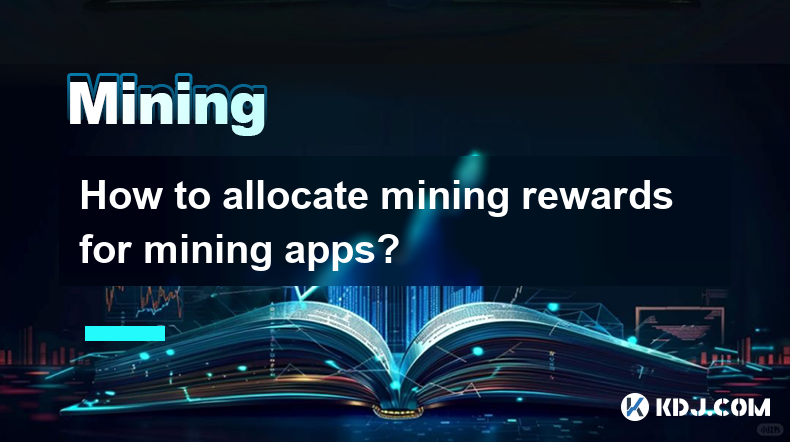-
 Bitcoin
Bitcoin $87,138.6549
3.45% -
 Ethereum
Ethereum $1,630.6301
3.37% -
 Tether USDt
Tether USDt $0.9999
0.02% -
 XRP
XRP $2.1240
3.87% -
 BNB
BNB $602.7013
2.07% -
 Solana
Solana $139.6766
1.06% -
 USDC
USDC $0.9999
0.02% -
 Dogecoin
Dogecoin $0.1617
5.47% -
 TRON
TRON $0.2432
-0.25% -
 Cardano
Cardano $0.6428
4.75% -
 Chainlink
Chainlink $13.4950
4.04% -
 UNUS SED LEO
UNUS SED LEO $9.4545
1.03% -
 Avalanche
Avalanche $20.5863
6.23% -
 Stellar
Stellar $0.2598
7.69% -
 Toncoin
Toncoin $3.0197
1.67% -
 Shiba Inu
Shiba Inu $0.0...01264
3.99% -
 Sui
Sui $2.2650
7.98% -
 Hedera
Hedera $0.1713
5.99% -
 Bitcoin Cash
Bitcoin Cash $340.6319
2.17% -
 Polkadot
Polkadot $3.9095
1.97% -
 Litecoin
Litecoin $80.7078
6.42% -
 Hyperliquid
Hyperliquid $17.8959
2.22% -
 Bitget Token
Bitget Token $4.4759
1.24% -
 Dai
Dai $1.0000
0.00% -
 Ethena USDe
Ethena USDe $0.9992
0.01% -
 Pi
Pi $0.6342
1.85% -
 Monero
Monero $216.1510
1.12% -
 Uniswap
Uniswap $5.4363
4.91% -
 Pepe
Pepe $0.0...07862
7.63% -
 Aptos
Aptos $5.1607
5.19%
How to allocate mining rewards for mining apps?
Mining app reward allocation requires balancing fairness, efficiency, and security. Proportional, tiered, and lottery systems each offer trade-offs, influenced by hashrate, network participation, and app features; preventing cheating and ensuring scalability are crucial developer considerations.
Mar 21, 2025 at 11:35 pm

Key Points:
- Defining the mining reward allocation problem within the context of mining apps.
- Exploring different allocation methods: proportional, tiered, and lottery-based systems.
- Analyzing the pros and cons of each method, considering fairness, efficiency, and security.
- Discussing factors influencing reward allocation: hashrate contribution, network participation, and app features.
- Addressing potential challenges and considerations for developers implementing reward systems.
How to Allocate Mining Rewards for Mining Apps?
Mining apps, designed to facilitate cryptocurrency mining on mobile devices or other limited hardware, present a unique challenge in reward allocation. Unlike traditional mining pools, where hashrate contribution directly translates to rewards, mobile mining faces limitations in processing power and network stability. Therefore, a fair and efficient reward system is crucial for the app's success and user engagement. The core issue lies in balancing individual contributions with the overall network health.
Proportional Reward Allocation:
This is the most straightforward approach. Mining rewards are distributed proportionally to each user's contribution to the total network hashrate. If a user contributes 1% of the total network's hashrate, they receive 1% of the mining rewards. This system is transparent and easily understandable, fostering trust among users. However, it may disproportionately favor users with more powerful devices, potentially leading to centralization.
Tiered Reward Allocation:
A tiered system categorizes users based on their contribution levels (e.g., beginner, intermediate, advanced). Each tier receives a different reward rate. This incentivizes users to improve their mining performance, while also rewarding consistent participation. The complexity lies in defining the tiers and their corresponding reward rates. Poorly designed tiers could lead to frustration and inequity.
Lottery-Based Reward Allocation:
This system introduces an element of chance. Users receive lottery tickets based on their contribution or participation, with the winners receiving a larger share of the rewards. This approach can encourage broader participation, even from users with limited resources. However, it might be perceived as less fair than proportional systems, as luck plays a significant role. The probability distribution of the lottery must be carefully designed to prevent exploitation.
Factors Influencing Reward Allocation:
Several factors must be considered when designing a reward allocation system for mining apps. These include:
- Hashrate Contribution: This is a fundamental factor, representing the computational power a user contributes to the mining process. However, solely relying on hashrate can lead to centralization and may not be suitable for all mining app models.
- Network Participation: Rewarding consistent participation, even with limited hashrate, encourages network stability and prevents sudden drops in mining power. This can be implemented through bonus rewards for continuous engagement.
- App Features: Integration of features like referrals, in-app purchases, or watching ads can supplement the reward system, providing additional incentives and revenue streams.
Challenges and Considerations:
Implementing a fair and efficient reward allocation system requires careful planning. Developers need to consider:
- Preventing Cheating: Mechanisms to detect and prevent fraudulent activities, such as botting or using unauthorized software, are essential for maintaining system integrity.
- Scalability: The chosen system must be scalable to accommodate a growing user base without compromising performance or fairness.
- Transparency: A transparent reward system builds trust and encourages user participation. Detailed information about reward calculations should be readily available.
- Security: Security vulnerabilities can lead to the loss of funds and damage the reputation of the app. Robust security measures are crucial.
Common Questions and Answers:
Q: How often are rewards distributed in mining apps?
A: Reward distribution frequency varies depending on the app and the chosen cryptocurrency. Some apps distribute rewards daily, while others do so weekly or monthly. The frequency is often balanced against transaction fees and network congestion.
Q: Are mining rewards taxable?
A: The tax implications of cryptocurrency mining rewards vary depending on your jurisdiction. It's essential to consult with a tax professional to understand your local tax laws and obligations. Mining rewards are generally considered taxable income in many countries.
Q: Can I use multiple devices with one mining app account?
A: Most mining apps allow the use of multiple devices per account, but they might have limitations on the total hashrate or processing power allowed. Check the app's terms and conditions for specific details. Some apps might restrict multiple device usage to prevent abuse.
Q: What are the risks associated with mining apps?
A: Risks include the possibility of low or inconsistent rewards, the risk of the app being shut down or compromised, and the potential for malware or scams. Thoroughly research the app and its developers before participating.
Q: How do mining apps handle reward distribution when network difficulty changes?
A: Reward allocation mechanisms in mining apps generally adjust to changes in network difficulty. In proportional systems, the rewards are automatically recalculated based on the updated network hashrate. In other systems, adjustments may be made to the reward tiers or lottery parameters to maintain a balance.
Disclaimer:info@kdj.com
The information provided is not trading advice. kdj.com does not assume any responsibility for any investments made based on the information provided in this article. Cryptocurrencies are highly volatile and it is highly recommended that you invest with caution after thorough research!
If you believe that the content used on this website infringes your copyright, please contact us immediately (info@kdj.com) and we will delete it promptly.
- Decentraland (MANA) Price Soars 10% to Two-Month High of $0.31, Bullish Trend May Extend Rally
- 2025-04-21 19:00:13
- AI Activity Data from Phoenix Group Indicates Strong Engagement for Injective ($INJ), Fetch.ai ($FET), and $ARC
- 2025-04-21 19:00:13
- Solana (SOL) Price Prediction: Will the Whale Buy the Dip and Spark a New Bull Market?
- 2025-04-21 18:55:14
- JUP, the native token of Jupiter exchange, is on the move
- 2025-04-21 18:55:14
- BingX Lists EPT, the Native Token for Balance.fun, on Its Spot Market and Xpool
- 2025-04-21 18:50:13
- Ethereum Gas Fee Drops to Record Lows, Average Transaction Now Costs Only $0.01
- 2025-04-21 18:50:13
Related knowledge

How to judge the stability and reliability of the mining pool?
Apr 19,2025 at 02:08pm
When engaging in cryptocurrency mining, choosing the right mining pool is crucial for maximizing your returns and ensuring a stable mining experience. The stability and reliability of a mining pool can significantly impact your overall success in mining. Here, we will explore the key factors to consider when evaluating the stability and reliability of a...

How to deal with abnormal noise during mining machine operation?
Apr 17,2025 at 01:35am
Mining machines are essential tools for cryptocurrency miners, but they can sometimes produce abnormal noises that may indicate underlying issues. Understanding how to identify and address these noises is crucial for maintaining the efficiency and longevity of your mining equipment. This article will guide you through the process of dealing with abnorma...

How to choose the right ASIC mining machine model?
Apr 21,2025 at 08:00am
Choosing the right ASIC mining machine model is crucial for maximizing your returns in cryptocurrency mining. The market offers a variety of ASIC miners, each with its own set of specifications and performance metrics. Understanding the key factors that influence your choice can help you make an informed decision that aligns with your mining goals and b...

How to maintain anonymity when mining?
Apr 17,2025 at 06:01pm
Maintaining anonymity when mining cryptocurrencies is crucial for many miners who wish to protect their privacy and security. This article will guide you through various strategies and tools that can help you achieve a high level of anonymity while engaging in mining activities. Understanding the Importance of Anonymity in MiningAnonymity in the context...

How to automate mining tasks through scripts?
Apr 18,2025 at 01:29pm
In the world of cryptocurrency, mining remains a crucial activity for generating new coins and securing blockchain networks. Automating mining tasks through scripts can significantly enhance efficiency and reduce manual labor. This article delves into the intricacies of automating mining tasks, providing a comprehensive guide on how to achieve this usin...

How to switch mining algorithms in the mining pool?
Apr 18,2025 at 12:00pm
Switching mining algorithms in a mining pool can be a strategic move for miners looking to optimize their mining operations. This process involves several steps and considerations, and understanding how to navigate it can significantly impact a miner's efficiency and profitability. In this article, we will explore the detailed steps required to switch m...

How to judge the stability and reliability of the mining pool?
Apr 19,2025 at 02:08pm
When engaging in cryptocurrency mining, choosing the right mining pool is crucial for maximizing your returns and ensuring a stable mining experience. The stability and reliability of a mining pool can significantly impact your overall success in mining. Here, we will explore the key factors to consider when evaluating the stability and reliability of a...

How to deal with abnormal noise during mining machine operation?
Apr 17,2025 at 01:35am
Mining machines are essential tools for cryptocurrency miners, but they can sometimes produce abnormal noises that may indicate underlying issues. Understanding how to identify and address these noises is crucial for maintaining the efficiency and longevity of your mining equipment. This article will guide you through the process of dealing with abnorma...

How to choose the right ASIC mining machine model?
Apr 21,2025 at 08:00am
Choosing the right ASIC mining machine model is crucial for maximizing your returns in cryptocurrency mining. The market offers a variety of ASIC miners, each with its own set of specifications and performance metrics. Understanding the key factors that influence your choice can help you make an informed decision that aligns with your mining goals and b...

How to maintain anonymity when mining?
Apr 17,2025 at 06:01pm
Maintaining anonymity when mining cryptocurrencies is crucial for many miners who wish to protect their privacy and security. This article will guide you through various strategies and tools that can help you achieve a high level of anonymity while engaging in mining activities. Understanding the Importance of Anonymity in MiningAnonymity in the context...

How to automate mining tasks through scripts?
Apr 18,2025 at 01:29pm
In the world of cryptocurrency, mining remains a crucial activity for generating new coins and securing blockchain networks. Automating mining tasks through scripts can significantly enhance efficiency and reduce manual labor. This article delves into the intricacies of automating mining tasks, providing a comprehensive guide on how to achieve this usin...

How to switch mining algorithms in the mining pool?
Apr 18,2025 at 12:00pm
Switching mining algorithms in a mining pool can be a strategic move for miners looking to optimize their mining operations. This process involves several steps and considerations, and understanding how to navigate it can significantly impact a miner's efficiency and profitability. In this article, we will explore the detailed steps required to switch m...
See all articles






















































































